For years now, wildlife experts have been complaining bitterly about the overcrowding at Masai Mara, the premier and most loved national park in Kenya. During peak season as many as 30 vehicles could be encircling animals which not only stresses them but also makes for poor sightings.
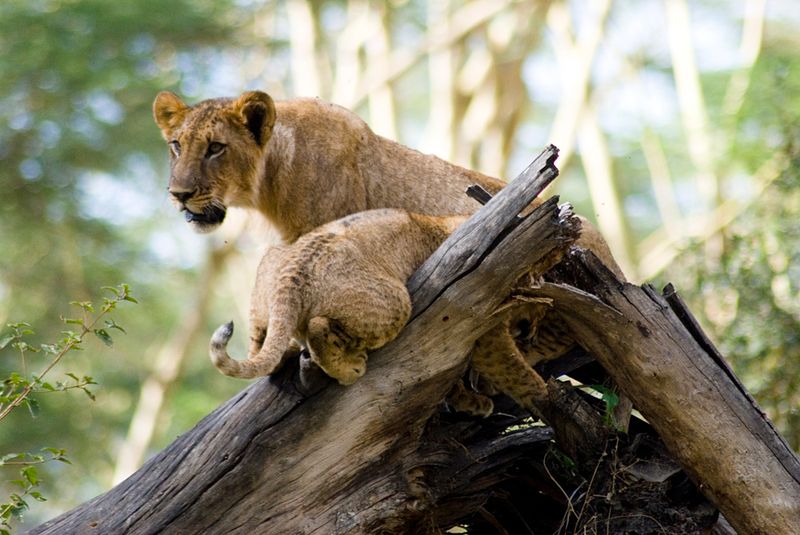
The sanctuary gained fame mainly through wildlife documentaries and mostly for the great wildebeest migration. Watching millions of wildebeest flanked by gazelles and zebras making the most tumultuous and dangerous Mara River crossing has become the single most spectacular wildlife sighting in Africa. But it’s not for the weak-hearted (aka me!). Apart from the high prices and 10 times the number of tourists, I don’t have the nerve to watch young wildebeests being swept away by the current or taken by massive Nile Crocodiles.
So can you have a magnificent wildlife safari in Kenya minus the Mara? I did and here’s how it went:
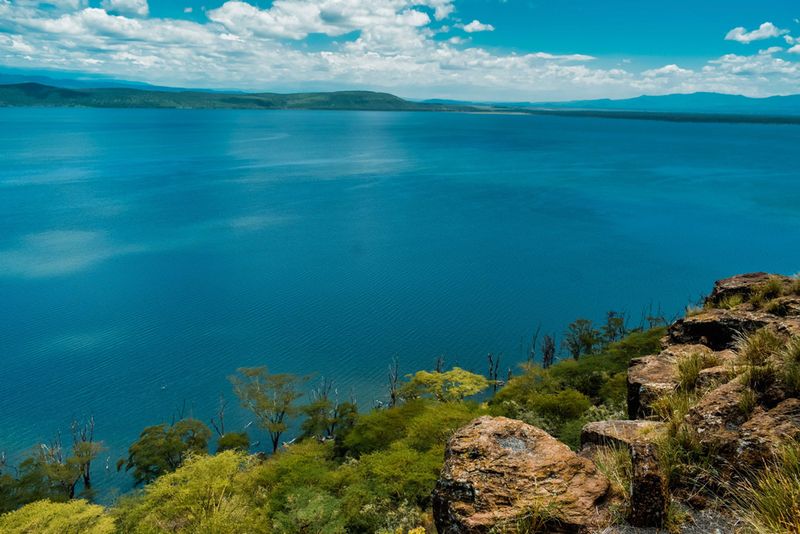
Lake Nakuru National Park
There’s something about beautiful sunsets when you are travelling. It’s like a stunning finale to a gorgeous day in paradise. All shades of orange, red and molten gold exploded across the sky like fireworks when we entered Lake Nakuru National Park in Kenya. This made our guide Jeremiah speed up a little so we could spot some wildlife before heading to our sanctuary for the night and the days ahead – Sarova Lion Hill Lodge. First came a troop of baboons cavorting on both sides of the road. A mother baboon frantically trying to tame her hyper active, but adorable baby baboon proved highly entertaining. The magical and serene Lake Nakuru with trees sprouting from its waters was a constant companion. And then they started to appear on the horizon - a sliver of pink fluttering over the river. It turned out to be pink flamingos the star of Lake Nakuru.

Interestingly, the pretty pink coat of the flamingos is not hereditary. “They are initially born with a dull grey colour. As they feed on algae and invertebrates they develop a reddish pink shade,” informs Jeremiah. So flamingos are proof of the saying ‘you are what you eat’! Of course I took a million pictures of the birds gliding on the water and some taking flight in to the sky. Then came the melodic munching of a herd of giraffes. In 1977 the endangered Rothschild giraffe was introduced to the park and are now thriving.
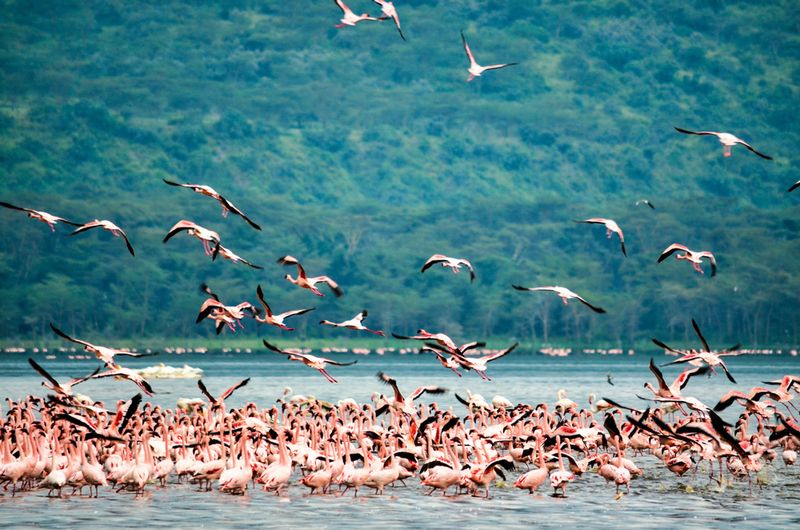
The sightings kept coming - a pack of spotted hyenas on the prowl, some crowned cranes I had only seen on calendars, the cute dik-dik (the world’s smallest antelope) and a pair of white rhinos luxuriating in the river unmindful of the birds hanging out on their backs. The rhinos, according to Jeremiah put up with this indignity because the birds make loud alarm calls whenever they see human approaching, giving the giant mammals early warning to flee from poachers. There were numerous zebras too. By the time we headed to Sarova Lion Hill Lodge the river had almost gobbled up the sun. I retired to a restful night in my four poster bed with views of the lake and the soundtrack of a colony of weaver birds entering and exiting their nests.

Shaba National Reserve
After two thrilling days at Sarova Lion Hill Lodge we headed to one of Kenya’s well-kept secrets - Shaba National Reserve. A rugged jungle in the northern province of the country, Shaba was the setting for the book and the film Born Free, for the film Out Of Africa and for the reality show Survivor: Africa. The wildlife here is as plentiful as its breath taking. First to make an appearance was the long necked gerenuk a cross between an antelope and a giraffe. “Gerenuks mark their territory with tar and urine. The male gerenuks secrete a thick tarry substance from their eyes and they wipe this fluid on the trunks and branches of trees to communicate their territory to other gerenuks,” informed our guide. Interestingly, their name means ‘giraffe-necked’ as they look similar to giraffes.
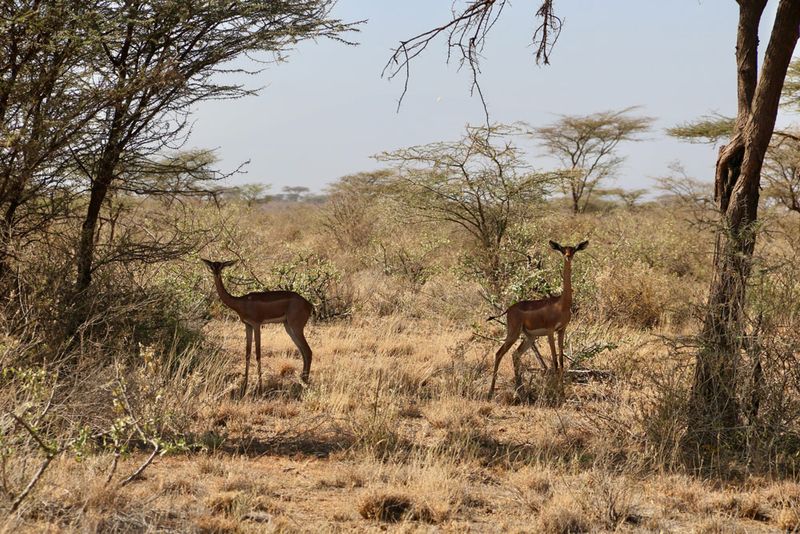
Vulturine guinea fowl – a gorgeous blue feathered bird with long white stripes and a longer tail makes its presence felt with a melodious call. Shaba records a less number of tourists as compared to the nearby national reserves of Samburu and Buffalo Springs which is great to watch these rare birds up close and in peace. It was as if we had the whole of Shaba for ourselves.

Barely 30 minutes into the safari our guide gets a call after which our Toyota Landcruiser feels like a Ferrari! Within minutes we are in front of a pride of lions frolicking in the afternoon sun. With hardly any safari vehicles in sight it felt like we were alone with those magnificent animals. That’s not all we also spot a leopard parked on a tree. That’s the benefit of being in a national park that’s not on the radar of most tourists.

Zebras, their stripes strikingly contrasting the jungle’s muted greens and browns made for curious onlookers while giraffes looking like elegant ballerinas on stilettos moved languidly from acacia to acacia in search of lunch. Much of Shaba’s charms lie in its stunning topography – open grasslands dotted with springs and swamps give way to jagged hills and dusty plains strewn with lava boulders. Throw in a few waterfalls and you are in thrilling paradise.
When you are in Shaba the action is not restricted to the jungle. When I return to the resort - this time the rustic and picturesque Sarova Shaba Game Lodge, I am taken to the resort’s riverfront where a pack of hungry crocodiles await. It is quite a sight to watch the giant reptiles make their way to the banks and then unexpectedly pounce on juicy cuts of raw meat.
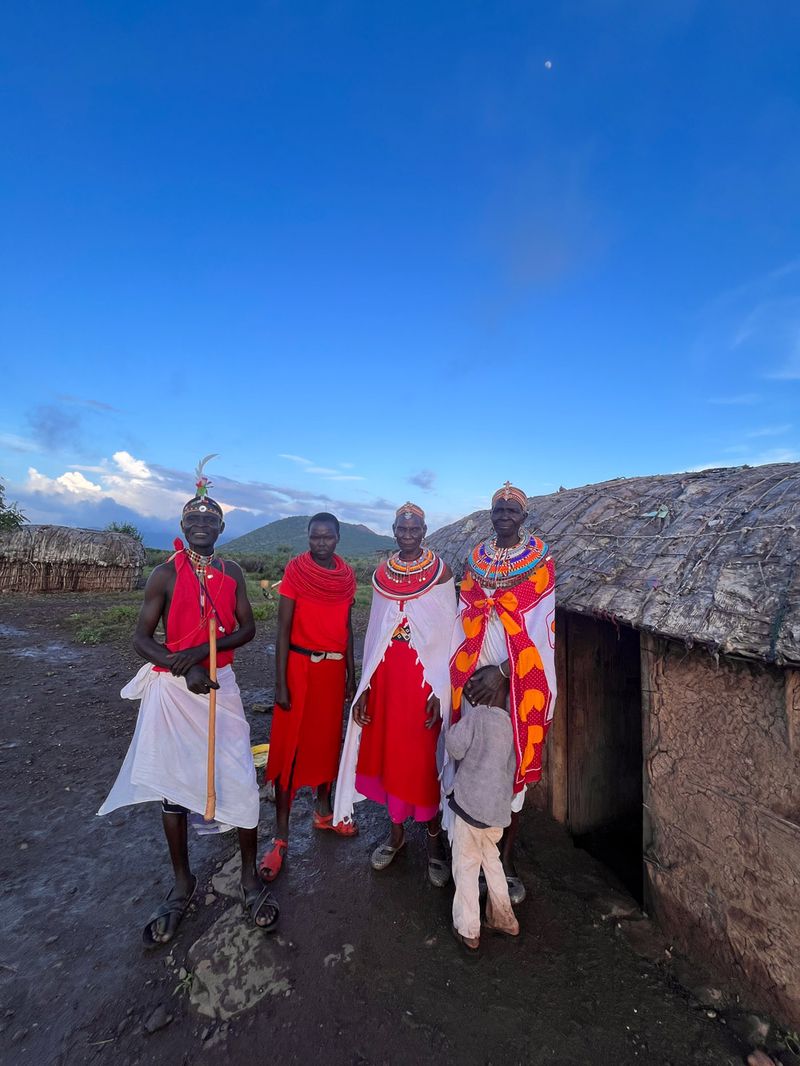
Around 5 in the evening I accompany hotel staff Hilda Ngisianton to Samburu village. A semi nomadic tribe the Samburus are known for their colourful costumes and the ‘leaping dance’ where the tall Samburu men leap towards the sky while the jewelled women sing songs. It doesn’t need much cajoling for me to join in the revelry.

With the sun slipping behind the horizon we headed back to the resort where a warming fire and barbeque was laid out under the star sprangled Shaba sky. As I took a sip of my Tusker beer I realised that the fire was not the only thing roaring. The ferocious Ewaso Ngiro river too was making its presence felt. What better way to celebrate a great day in the African bush?
Tips for a great safari vacation
- Pack light. There’s a 15 kg limit on air travel if you take a flight to reach the park.
- Avoid black, blue, navy and red as these attract insects. Safe to stick to neutrals.
- Safaris can be bumpy. Grab the seat in the front.
- Definitely carry a hat/scarf. Whizzing around in an open 4x4 can wreak havoc on your hair if it’s not tied back or covered with a hat. A water bottle and a light jacket (for morning safaris) are recommended.
- Binoculars come handy to watch animals up close.
- Most resorts have WiFi but only in the communal areas.


_1706798222399_thumb_1200.jpeg?w=3840&q=75)